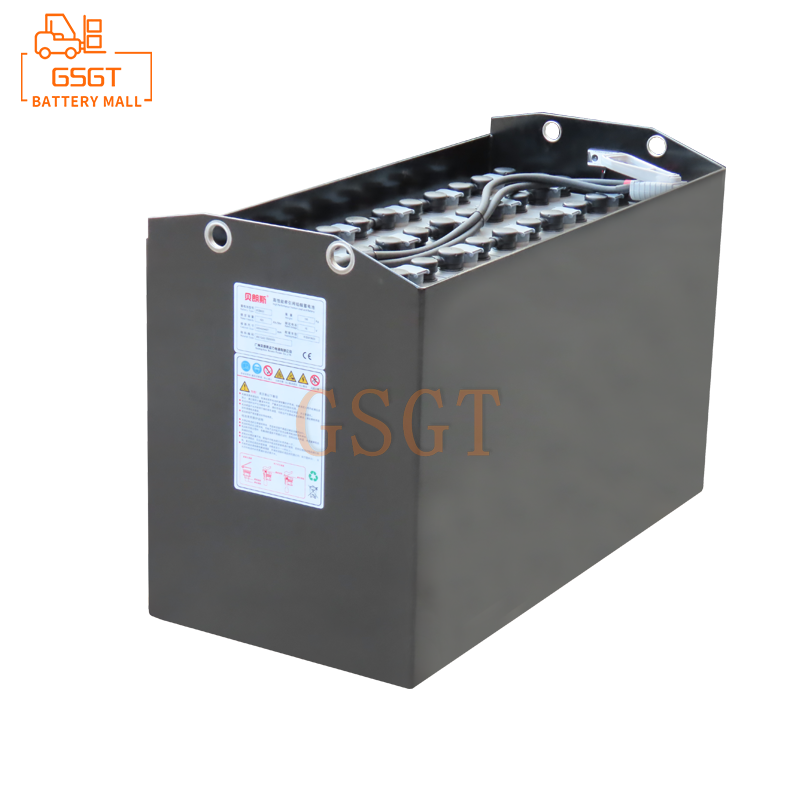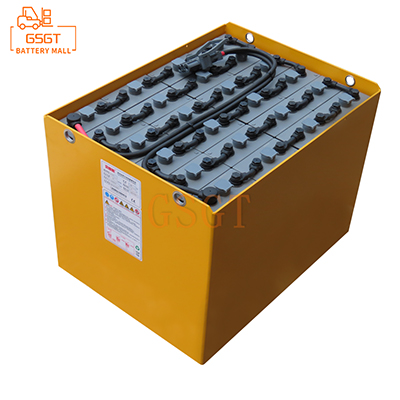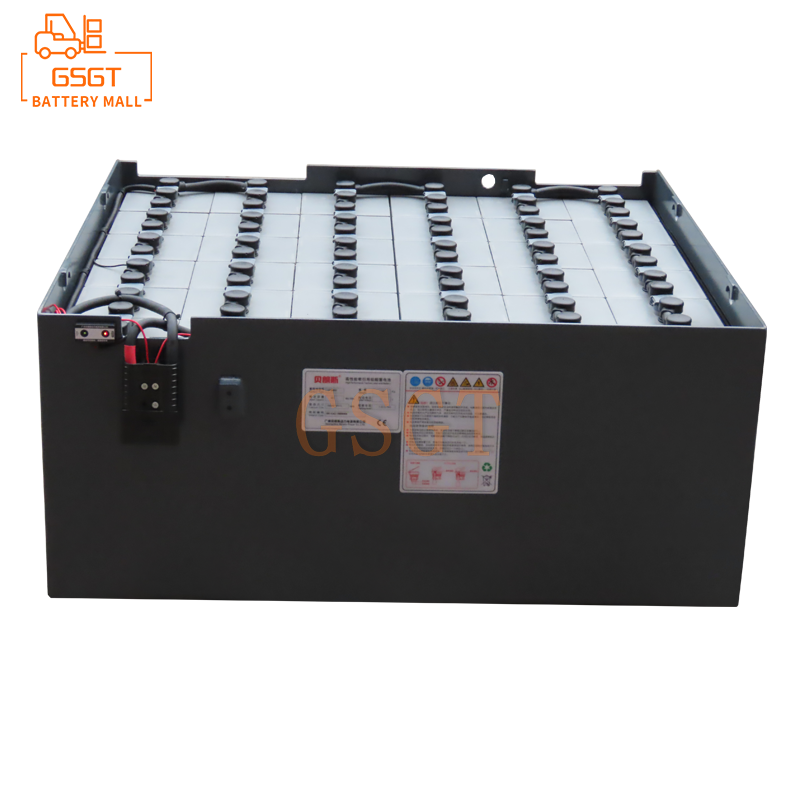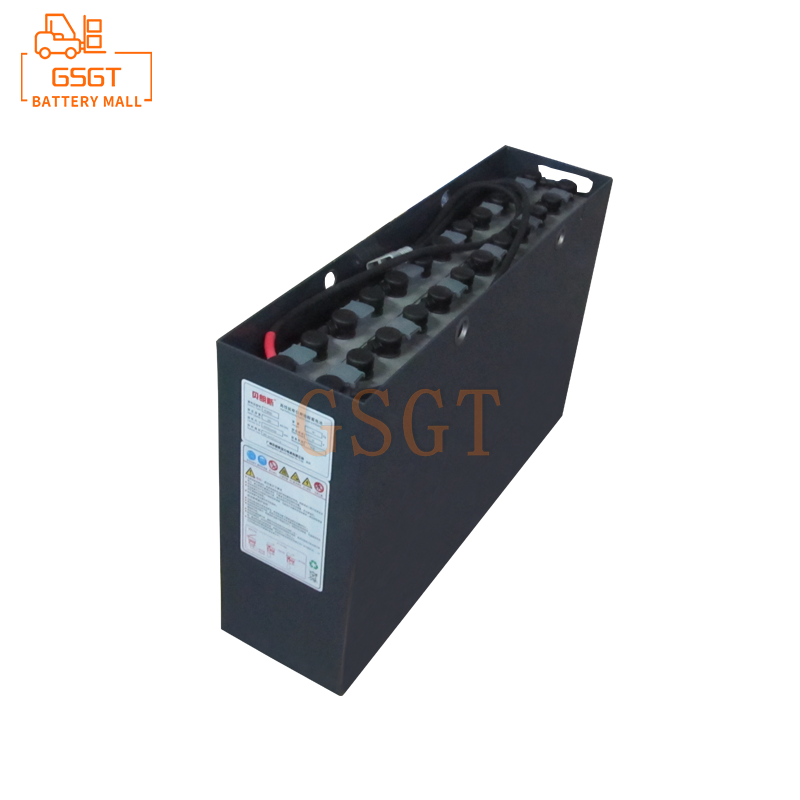Time:2025-04-29 10:41:48
Browse:614
Introduction
In the field of industrial logistics, forklifts, as key material handling equipment, have a crucial power source. Lead-acid batteries are widely used in forklift power systems due to their advantages such as low cost, mature technology and large capacity. As the core component for maintaining the performance and lifespan of lead-acid batteries, the reasonable selection and correct use of charging equipment directly affect the operational efficiency, usage cost and safety of forklifts. This article will delve into the selection criteria and key points of use for lead-acid battery charging equipment used in forklifts.
1. Brief Description of the Working Principle of Lead-Acid Batteries
Lead-acid batteries achieve the mutual conversion of electrical energy and chemical energy through electrochemical reactions. During the discharge process, lead dioxide at the positive electrode and lead at the negative electrode react with sulfuric acid in the electrolyte to form lead sulfate and water. Electrons flow from the negative electrode through the external circuit to the positive electrode, thereby providing electrical energy for the forklift. During charging, the process is reversed. Electrical energy prompts lead sulfate and water to be reconverted into lead dioxide, lead and sulfuric acid, restoring the battery's power.
2. Types and Characteristics of Charging Equipment
(1) Constant current charger
Working principle: The constant current charger maintains a constant output current during the charging process. It ADAPTS to the constantly changing internal resistance of the battery by adjusting the charging voltage. As the charging proceeds, the battery voltage gradually rises, while the charging current remains at the set value until the battery is nearly fully charged.
Advantages: It can ensure that the battery accepts charging at a stable rate. For new batteries or those that have been idle for a long time, it can effectively prevent damage to the plates caused by large current impacts, which is conducive to extending the battery's lifespan. During the initial charging stage of the battery, it can quickly recharge the battery.
Disadvantage: In the later stage of charging, the battery voltage rises. If constant current charging is still maintained, the charging voltage will be too high, which may cause excessive gas evolution and water loss in the battery, accelerating its aging. Moreover, constant current charging cannot automatically adjust the charging strategy according to the actual state of the battery and requires manual switching of the charging mode in a timely manner.
(2) Constant Voltage charger
Working principle: The output voltage of a constant voltage charger remains constant, while the charging current gradually decreases as the battery voltage rises. When charging begins, the battery voltage is relatively low and the charging current is relatively large. As charging progresses, the battery voltage gradually approaches the output voltage of the charger, and the charging current gradually decreases until it reduces to a certain extent, which is considered that the battery is fully charged.
Advantages: The current automatically decreases in the later stage of charging, which can prevent the battery from overcharging, reduce the risk of battery water loss and plate sulfation. The operation is relatively simple and does not require frequent manual intervention.
Disadvantages: The initial charging current is relatively large, which may cause a certain impact on the battery and is not suitable for batteries with high internal resistance or severe aging. If the charging voltage is not set properly, it is easy to cause insufficient charging or overcharging.
3. Key Points for Selecting Charging Equipment
(1) Match the parameters of the battery
Voltage matching: The output voltage of the charger must be strictly matched with the rated voltage of the forklift's lead-acid battery pack. For instance, common forklift battery pack voltages include 24V, 36V, 48V, 72V, etc. A charger with the corresponding output voltage should be selected. If the voltage does not match, if it is too high, it will cause the battery to be overcharged and damaged; if it is too low, it will not be fully charged.
Current matching: The charging current is generally selected at 10% to 20% of the battery capacity. For example, for a 200Ah battery, the appropriate charging current is between 20A and 40A. At the same time, the battery's charging acceptance capacity should be taken into account. New batteries or those in good health can withstand a larger charging current, while aged batteries need to have their charging current appropriately reduced to prevent overheating and plate damage.
(2) Charging Efficiency and Energy Consumption
Charging efficiency: Prioritize the selection of equipment with high charging efficiency. High-efficiency chargers can fully charge the battery in a shorter time, enhancing the turnover rate of forklifts. Generally speaking, smart chargers, due to the adoption of optimized charging algorithms, have relatively high charging efficiency, reaching 80% to 90%, while the efficiency of traditional constant current and constant voltage chargers may be around 70% to 80%.
Energy consumption: During long-term use, the energy consumption of charging equipment has a significant impact on operating costs. Attention should be paid to the energy consumption index of the equipment, and products with low energy consumption should be selected. Some new types of chargers have adopted energy-saving technologies, such as power factor correction technology, which can effectively reduce energy consumption and lower electricity bills.
(3) Functional Characteristics
Multi-stage charging function: Chargers with multi-stage charging functions such as constant current, constant voltage, and float charging can better meet the charging requirements of lead-acid batteries. Multi-stage charging enables the battery to receive the most suitable charging parameters at different charging stages, ensuring fast charging while avoiding overcharging and undercharging, thus extending the battery's lifespan.
Protection function: A complete protection function is the key to ensuring charging safety and the stable operation of the equipment. Overvoltage protection can prevent the battery from being damaged due to excessively high charging voltage. Overcurrent protection can prevent excessive charging current from burning out the equipment or damaging the battery. Short-circuit protection quickly cuts off the power supply when a short circuit occurs in the charging circuit to prevent accidents. Overheat protection can automatically reduce power or shut down the equipment when its temperature is too high, protecting the internal components of the equipment.
Display and monitoring function: The charger should be equipped with a clear display screen to show parameters such as charging voltage, current, time, and battery level in real time, facilitating the operator's understanding of the charging status. Some high-end chargers also have remote monitoring functions. They can be connected to the monitoring system through the network to achieve remote monitoring and control of the charging process, which is convenient for centralized management and maintenance.
(4) Equipment quality and reliability
Brand and reputation: Choose charging equipment from well-known brands. They usually have more advantages in product research and development, production processes, and quality control, and the product quality and reliability are more guaranteed. You can learn about the reputation of different brands by consulting user reviews, industry reports and other means.
Production process and materials: High-quality chargers adopt advanced production techniques and high-quality electronic components. Their internal circuit layout is reasonable, and they have excellent heat dissipation performance, which can effectively reduce the occurrence rate of equipment failures and enhance the stability and durability of the equipment. When making a purchase, you can ask the manufacturer about the production process of the equipment and the main materials selected.
(5) After-sales Service
Maintenance and repair support: Charging equipment may malfunction during use. Good after-sales service can ensure that the equipment is repaired in a timely manner and reduce downtime. Choose a manufacturer that offers comprehensive maintenance and repair services. It should have a professional maintenance team and sufficient spare parts, and be able to respond to and solve equipment malfunctions in a short time.
Technical training and consultation: Manufacturers should be able to provide users with training on the use of charging equipment, helping operators correctly master the operation methods and precautions of the equipment. Meanwhile, when users encounter problems during the usage process, technical consultation services can be provided in a timely manner to answer their questions.
4. Key Points for Using Charging Equipment
(1) Charging environment requirements
Temperature and humidity: The temperature of the charging environment should be maintained between 10℃ and 30℃. If the temperature is too high, it will accelerate the battery's water loss and the aging of the plates. If it is too low, it will reduce the battery's charging acceptance capacity and affect the charging effect.
Ventilation conditions: During the charging process of lead-acid batteries, flammable gases such as hydrogen are produced. Therefore, the charging site must maintain good ventilation to prevent the accumulation of flammable gases and the risk of explosion. Poor ventilation can also cause poor heat dissipation of the battery, affecting its lifespan.
Placement location: The charger should be placed in a stable, dry and vibration-free area, avoiding direct sunlight and rain. Keep away from heat sources, water sources and flammable and explosive items. At the same time, it should be convenient for operators to operate and maintain.
(2) Preparations before charging
Inspect the battery's appearance: Before charging, carefully check if the battery casing is damaged or deformed, if the terminals are corroded or loose, and if the electrolyte is leaking, etc. If any abnormality is found in the battery, it should be repaired or replaced in time to avoid safety accidents during the charging process.
Clean the battery surface: Use a clean damp cloth to wipe the battery surface to remove dust, dirt and electrolyte residue. Keeping the battery surface clean can prevent self-discharge and avoid short circuits caused by impurities at the same time.
Check the electrolyte: Check the liquid level and density of the electrolyte. The liquid level should be between the upper and lower limits marked on the battery casing. If the liquid level is too low, distilled water or special lead-acid battery replenishment solution should be added. The density of the electrolyte should comply with the standards specified by the battery manufacturer. It can be measured with a densitometer. Both excessively high and low densities will affect the performance of the battery.
(3) Correct connection and operation
Connection sequence: First, correctly connect the output plug of the charger to the charging socket of the battery, ensuring a firm connection and good contact. Then, plug the power plug of the charger into the municipal power socket. It is strictly prohibited to turn on the charger without connecting the battery to avoid damaging the charger.
Set charging parameters: According to the type, capacity and actual state of the battery, correctly set parameters such as charging voltage, current and charging time on the charger. For smart chargers, you can directly select the corresponding battery type and charging mode, and the device will automatically set the optimal parameters.
Start charging: After confirming that the connection is correct and the parameters are set correctly, turn on the power switch of the charger and start charging. During the charging process, the operator should closely observe the working status of the charger and the reaction of the battery. If any abnormality is found, the charging should be stopped immediately and an inspection should be carried out.
(4) Monitoring of the charging process
Observe the parameters of the charger: Regularly check the parameters such as charging voltage, current and time displayed on the charger's screen to ensure they are within the normal range. If there are abnormal fluctuations in the parameters, it may indicate that there is a fault with the battery or the charger.
Check the battery temperature: Use an infrared thermometer or thermometer to measure the surface temperature of the battery. During the charging process, the battery temperature should not exceed 45℃. If the temperature is too high, it may be due to excessive charging current, internal short circuit of the battery or poor heat dissipation, etc. Cooling measures should be taken promptly or charging should be stopped for maintenance.
Pay attention to the battery's exhaust condition: Lead-acid batteries will produce a considerable amount of gas in the later stage of charging. It is necessary to observe whether the exhaust holes of the battery are unobstructed to prevent the battery from being damaged due to excessive internal pressure caused by poor exhaust. At the same time, it is necessary to avoid open flames or sparks near the battery to prevent hydrogen explosion.
(5) Charging completion operation
Stop charging: When the charger indicates that the battery is fully charged or the set charging time has been reached, first turn off the power switch of the charger, then unplug the connection plug between the charger and the battery, and finally unplug the power plug of the charger.
Battery maintenance: After charging is completed, check the appearance of the battery, the connection of the terminals and the level of the electrolyte again. If the battery is not used for a long time, it should be recharged at regular intervals to prevent self-discharge and resulting in low power.
Storage of the charger: Clean the charger thoroughly and store it properly in a dry and well-ventilated place. If the charger is not used for a long time, it is recommended to conduct a power-on test at regular intervals to ensure its normal performance.
5. Common Problems and Solutions
(1) Insufficient battery charging
Cause analysis: It might be due to reasons such as too low output voltage of the charger, too short charging time, increased internal resistance of the battery due to aging, or abnormal density of the electrolyte.
Solution: Check whether the output voltage of the charger meets the battery requirements and adjust the charging time. Activate the battery, such as by using multiple charge and discharge with a small current; Measure the density of the electrolyte and adjust it if necessary. If the battery is severely aged, it should be considered for replacement.
(2) Overcharging of the battery
Cause analysis: Excessively high voltage setting of the charger, faults in the charging control circuit, and faults in the battery temperature sensor can all lead to overcharging of the battery.
Solution: Recalibrate the charging voltage of the charger; Inspect the control circuit of the charger and repair or replace the faulty components; Check the battery temperature sensor and its connecting circuit to ensure they are working properly.
(3) Charger failure
Cause analysis: Common causes include damage to electronic components, poor heat dissipation, overload, short circuit, etc.
Solution: For simple faults, such as a blown fuse, the fuse can be replaced. If the damage is caused by electronic components, professional maintenance personnel are required to conduct inspection and replacement. In daily use, it is necessary to keep the charger clean and have good heat dissipation conditions to avoid overload and short circuit situations.
6. Conclusion
The selection and use of lead-acid battery charging equipment for forklifts is a systematic project, which is related to the operational performance of forklifts, battery life and usage costs. When choosing charging equipment, it is necessary to comprehensively consider multiple factors such as matching with battery parameters, charging efficiency and energy consumption, functional characteristics, equipment quality and reliability, as well as after-sales service, to select the most suitable product. During the usage process, strictly follow the key points such as the charging environment requirements, pre-charging preparations, correct connection and operation, charging process monitoring, and charging completion operation to carry out standardized operations. Also, promptly solve common problems to ensure the stable operation of the charging equipment and battery, providing a reliable guarantee for the efficient operation of the forklift. With the continuous advancement of technology, future charging equipment will develop in the direction of intelligence, efficiency and energy conservation. Users should keep an eye on industry trends and upgrade charging equipment in a timely manner to meet the development needs of forklift power systems.

$2450

$3405

$4045

$1060

MESSAGE
Professional And Efficient
Security
Affordable Price
Professional Services